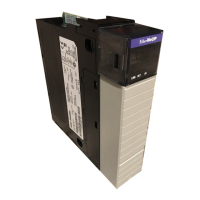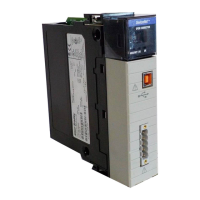Interpret the Attribute Tables
Rockwell Automation Publication MOTION-RM003I-EN-P - February 2018 93
In the attribute tables, attributes and services are defined as Required (R) or
Optional (O). Required attributes and services must be supported in the
implementation of the object. Optional attributes and services may or may not be
supported in the implementation and are left to the discretion of the device
manufacturer.
For Instance Attributes, the determination of whether a given attribute or service
is Required or Optional often depends on the associated Device Function Code.
Required Implementation
If an attribute is marked as Required for a given Device Function Code then the
controller implementation, including configuration and programming the
software, support that attribute if the end device is intended to operate in that
mode. For example, an attribute marked as Required for Device Function Code 'V'
is supported by any controller that intends to interface to a CIP Motion device
that supports Velocity Loop operation.
In some cases an attribute or service may not even be applicable to a given Device
Function Code. This situation is implied when the attribute is defined as neither
Required nor Optional for that code.
Conditional Implementation
In some cases attributes have different rules for different conditions; a motor
attribute might be Required for Permanent Magnet Motors but Optional for
Induction Motors. For that case, a C would be placed under the supported Device
Function Codes and the Conditional Implementation column would show the
differentiation between the motor types/
Attributes can be 'Required' in the controller, but 'Optional' as a replicated
attribute to the drive. Again, a C would be placed under the applicable Device
Function Codes and the Conditional Implementation column would show the
differentiation between the Controller only and Drive replicated implementation.
Attribute Enumeration and Bit definitions are also designated as Required,
Optional, or Conditional, with an appropriate Device Function Code if
applicable. If no designation is associated with the Enumeration or Bit definition,
then it is assumed that the enumeration is Required in the implementation.
For some attributes, there are conditional implementation rules that extend
beyond the Device Function Code. These rules are specified in the Conditional
Implementation column of the attribute table.
In the following example table, the attribute PM Motor Resistance is required in
the implementation if the device supports Frequency Control, Position Control,
Velocity Control, or Torque Control and the device supports Permanent Magnet
Required vs. Optional Axis
Attributes

